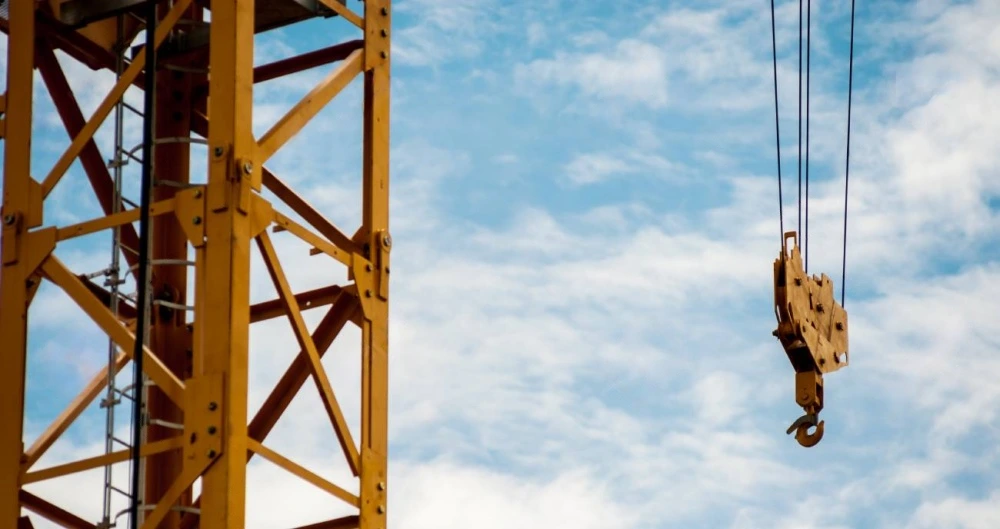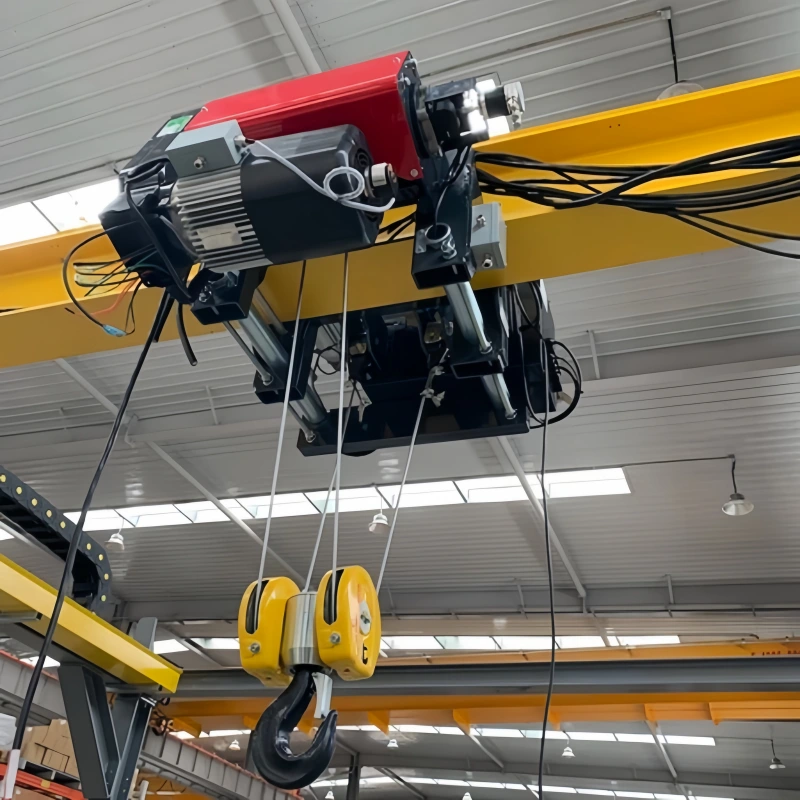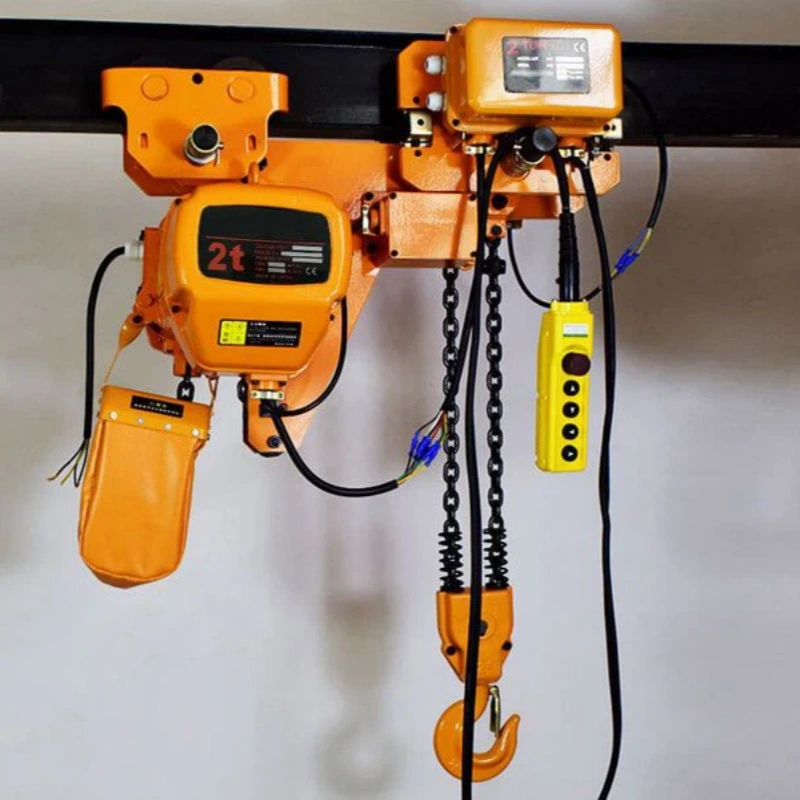You need the right approach when lifting heavy loads safely and efficiently. Many professionals rely on a block and tackle system for jobs in demanding environments.
Industries such as construction, marine, automotive, and mechanical repair, mining, and theatrical productions use these systems every day. If you want to learn how to use a block and tackle with confidence, you can trust Powerful Machinery for high-performance lifting solutions that meet strict safety standards.
Key Takeaways
Understand the essential components of a block and tackle system. Each part, like pulleys and ropes, plays a crucial role in safe lifting.
Always inspect your equipment before use. Check for wear and damage to ensure safety and reliability during lifting operations.
Follow proper assembly and attachment procedures. Securely connect your system to a stable anchor point to prevent accidents.
Thread the rope correctly through the pulleys. This maximizes mechanical advantage, making heavy lifting easier and safer.
Prioritize safety by using certified products and following industry best practices. Regular training and inspections help prevent accidents.
Block and Tackle Equipment

Essential Components
You need to understand the main parts before you assemble a block and tackle. Each component plays a specific role in lifting heavy loads safely. The table below outlines the essential elements and their functions:
Component | Function |
|---|---|
Pulley Configuration | Multiplies your input force, making heavy lifting easier. |
Haul/Lower System | Provides mechanical advantage for efficient operation. |
Edge Protection | Reduces friction and prevents rope abrasion during use. |
Connectors | Securely attach the system to anchor points or loads. |
Ropes | Transmit force through the block and tackle pulleys. |
Belay System | Adds redundancy for extra safety in case of failure. |
When you choose equipment, you want reliability and strength. Powerful Machinery offers high-quality options such as the Snatch Block With Hook, Snatch Block With Shackle, Red Snatch Block Shackle, and a full range of Pulley & Blocks.
These products feature forged alloy bodies, heat-treated hooks and shackles, and roller bearings for smooth operation. You can trust these components to deliver consistent performance in construction, marine, and industrial settings.
Additional Tools
You may need extra tools to set up your block and tackle system. These include shackles, carabiners, and edge protectors. Powerful Machinery provides certified shackles and hardware accessories that meet international safety standards. You should always inspect your ropes and connectors before each use to ensure safety.
Tip: Always match your block and tackle pulleys and ropes to the load you plan to lift. Using the correct size and type prevents accidents and equipment damage.
When selecting the right block and tackle for your job, consider these criteria:
Adhere to international standards such as FEM, DIN, or ISO for safety and durability.
Check the load capacity and dimensions to match your lifting needs.
Identify your application: onshore, offshore, or undersea.
Decide if you need manual or motorized handling.
Ensure compliance with sector-specific regulations.
Verify quality documentation from the manufacturer.
You improve safety and efficiency when you choose certified products from Powerful Machinery. Their pulley system solutions help you tackle demanding lifting tasks with confidence.
How to Use a Block and Tackle?
Learning how to use a block and tackle correctly ensures safe and efficient lifting. Follow these step-by-step instructions to assemble, attach, thread, and operate your system with confidence.
Assembly Steps
Start by gathering all necessary components. Lay out your pulleys, ropes, hooks, shackles, and connectors. Choose high-quality equipment, such as the Snatch Block With Hook or Snatch Block With Shackle from Powerful Machinery, to guarantee strength and reliability.
Before you begin assembly, inspect each part for wear or damage. Common mistakes during assembly can compromise safety and performance. Watch for these issues:
Worn pins, axles, or fittings that may need replacement.
Deformation in the side plates or pins from previous overloads.
Misalignment or wobble in sheaves.
Loose or missing snap rings on pins.
Improper positioning of the sheave pin nuts can cause end play.
Excessive wear or corrosion on hooks, shackles, or nuts.
Cracks or corrosion in side plates.
Hook latches that do not operate smoothly or are bent.
Assemble the block and tackle by connecting the pulleys and securing all nuts and bolts. Make sure each component fits tightly and moves freely. Use only certified hardware accessories from Powerful Machinery to maintain system integrity.
Tip: Double-check all connections before moving to the next step. A secure assembly prevents accidents and equipment failure.
Secure Attachment
Next, attach your block and tackle system to a fixed anchor point. Select an immovable structure that can handle the intended load. For best results, use certified shackles or hardware from Powerful Machinery.
Follow these best practices for secure attachment:
Attach to an anchor point that meets industry standards.
Inspect the anchor for wear, corrosion, or defects before use.
Ensure the anchor is stable and will not shift during lifting.
Use the correct size and type of shackle or hook for your load.
Routine inspections of your anchorage points help prevent accidents. Always verify that your attachment meets safety requirements before you proceed.
Rope Threading
Threading the rope correctly is essential for maximizing mechanical advantage and ensuring safe operation. Begin by understanding how a block and tackle works. The rope should run through the pulleys in a way that multiplies your input force, making heavy lifting easier.
To thread the rope:
Attach one end of the rope to the anchor or fixed block.
Pass the rope through the moving block’s sheave.
Continue threading through the fixed block’s sheave.
Repeat the process if you use multiple pulleys, increasing the mechanical advantage with each additional sheave.
Proper threading allows you to lift heavier loads with less effort. For example, a simple 2:1 setup lets you hold a 100 lb weight with only 50 lb of force. Each additional pulley further reduces the force required.
Choose the right knot or fastener to secure the rope. The table below outlines recommended options:
Knot Type | Characteristics |
|---|---|
Alpine Butterfly | Distributes load without excessive friction, suitable for high-stress points. |
Bowline | Low friction, easy to untie after heavy loads, preserves rope strength. |
Münter Hitch | Easily adjustable under load, ideal for controlling descent or belaying. |
Clove Hitch | Versatile for quick adjustments, it allows for secure, temporary anchoring. |
Improper rope threading can create hazards. If you do not design or use the system properly, the load may slip or fall, leading to serious injury or death. Using the wrong sheave material can also cause premature wear and system failure.
Lifting Operation
Once you have assembled and attached your block and tackle and threaded the rope, you are ready to lift. Stand clear of the load path and communicate with your team before starting.
To operate the system:
Grip the free end of the rope firmly.
Pull steadily and smoothly to raise the load. Avoid jerking or sudden movements.
Monitor the load as it rises, checking for any signs of instability or shifting.
If you need to lower the load, release the rope slowly and maintain control at all times.
Always stay within the working load limit (WLL) of your block and tackle. The WLL indicates the maximum safe load for normal operation. Manufacturers design this limit with a safety factor, so the actual breaking strength is much higher.
For example, some systems can lift to 20 tonnes, but you should never exceed the rated WLL.
Powerful Machinery’s Pulley & Blocks, Snatch Block With Hook, and Snatch Block With Shackle are engineered for high capacity and safety. Their products display the WLL clearly, helping you avoid overloading.
Note: Never stand under a suspended load. Always keep hands, feet, and loose clothing away from moving parts.
Understanding how to use a block and tackle gives you the confidence to handle heavy lifting tasks safely. When you follow these steps and use certified equipment, you maximize efficiency and minimize risk.
If you want to learn more about how a block and tackle works, review the manufacturer’s guidelines and practice safe operation with every lift.
Block and Tackle Rigging Safety
Precautions
You must always prioritize safety when working with block and tackle rigging. Following strict precautions helps prevent accidents and ensures smooth operation. Use this checklist before every lift:
Check that your equipment is complete, with all safeguards in place and free from defects.
Install the system properly, making sure it is stable and not in a risky location.
Keep your training up to date. Regularly review safe block and tackle rigging procedures.
Confirm the load fits the equipment’s capacity and is well distributed.
Use monitoring and overload protection systems to avoid accidents.
Never adjust the load manually during operation.
Prevent access to dangerous parts by using guards or barriers.
Make sure all equipment is clearly marked for safe use.
Wear the necessary safety gear, such as helmets and gloves.
Never stand under a suspended load.
Safety Tip: Always inspect your block and tackle rigging system before and after each use. Early detection of wear or damage can prevent serious incidents.
Best Practices
You can improve safety and efficiency by following industry-recommended best practices for block and tackle rigging:
Select ropes that match your block and tackle rigging system’s load requirements and environmental conditions.
Inspect all components regularly for signs of wear, abrasion, or damage.
Store ropes and hardware in a dry, clean area to prevent deterioration.
Ensure all operators receive proper training and certification in block and tackle rigging.
Choose secure anchorage points that can support the intended load without risk of failure.
Follow all relevant guidelines and standards for anchorage and lifting heavy loads.
Certified products play a crucial role in safe block and tackle rigging. Powerful Machinery offers equipment that meets or exceeds major international standards. The table below highlights key certifications and their purposes:
Certification | Purpose |
|---|---|
ISO | Global acceptance of safety standards |
TUV Rheinland | Independent quality assurance |
EURO CERT | Recognized quality assurance |
OSHA | Workplace safety compliance |
ASME B30.26 | Design and testing guidelines |
EN 13889 | European lifting equipment standards |
When you choose certified block and tackle rigging products from Powerful Machinery, you gain peace of mind and ensure the highest level of safety for every lift.
Troubleshooting Block and Tackle Rigging
Rope Issues
You may encounter several rope-related problems when using your block and tackle system. Regular inspection helps you catch these issues early and prevent accidents. Common rope issues include:
Wear on pins, axles, and fittings, which may require replacement.
Deformation from overload or rough handling.
Misalignment or wobble in sheaves.
Loose or missing nuts and bolts after reassembly.
Excessive wear in hooks and shackles.
Corrosion or cracks in welded side plates.
To prevent these problems, inspect your equipment before each use. Lubricate moving parts based on how often and where you use the system. For example, bronze bushings and roller bearings need different lubrication schedules.
Powerful Machinery’s snatch blocks and pulleys feature robust construction and easy maintenance, helping you avoid most rope-related failures.
If you notice rope slippage or jamming, consider using a block with a built-in jam cleat. The table below shows how this feature can help:
Feature | Description |
|---|---|
Built-in Serrated Jam Cleat | Secures the rope, preventing slippage and jamming during use. |
Easy Release | Allows for quick release by pulling the rope at a specific angle, enhancing usability. |
Self Locking | The jam cleat grips the rope securely, preventing accidents if the grip is lost while hoisting. |
Lifting Problems
You might face lifting problems, such as cable jamming or difficulty moving the load. These issues often result from improper setup or worn components. To troubleshoot:
Check for cable jamming and ensure the rope runs smoothly through all sheaves.
Use high-quality ropes, like parachute cord, to reduce the risk of jamming.
Inspect the sheave tolerances; tighter tolerances can prevent cables from getting stuck.
Replace any damaged or worn parts immediately.
Powerful Machinery designs its products with precision tolerances and high-strength materials, reducing the likelihood of these problems.
Inspection Tips
Routine inspections keep your block and tackle system safe and reliable. Follow these tips:
Inspect rigging equipment before each use and during operation.
Remove any defective equipment from service right away.
Test hoist anchorage to 125% of the rated load before first use and after any repairs.
Perform comprehensive inspections every 30 to 90 days, depending on usage.
Monitor the condition of gears and bearings with regular lubrication and cleaning.
Inspection Type | Frequency |
|---|---|
Frequent | Daily to monthly |
Periodic | 1- to 12-month intervals |
Operator-driven inspections can catch most developing problems early. Condition monitoring and trending data help you spot issues before they lead to failure. Powerful Machinery’s durable products and support make ongoing maintenance straightforward, so you can focus on safe lifting.
Conclusion
You can master block and tackle operations by following these essential steps:
Select the right chain pulley block for your task.
Inspect and maintain your equipment regularly.
Install the system correctly and train all operators.
Check the lifting area and use proper lifting techniques.
Update safety procedures as needed.
Choosing certified products, like those from Powerful Machinery, ensures compliance with regulations such as LOLER and keeps your workplace safe.
Practicing safe operation and reviewing troubleshooting tips helps prevent injuries and equipment failures. For further training, explore reputable resources and courses to strengthen your skills.
FAQ
How do you choose the right block and tackle for your lifting job?
You should match the working load limit (WLL) to your load. Check rope diameter and pulley size. Select certified products from Powerful Machinery for reliability. Review your application needs and always follow manufacturer guidelines.
What maintenance does your block and tackle system require?
Inspect all components before each use. Lubricate moving parts regularly. Replace worn ropes, hooks, or shackles. Powerful Machinery products feature pressure lube fittings for easy maintenance. Store equipment in a dry, clean area.
Can you use a block and tackle outdoors or in marine environments?
Yes, you can use block and tackle systems outdoors and in marine settings. Powerful Machinery offers corrosion-resistant options designed for harsh environments. Always inspect for rust or wear after exposure to moisture.
What safety gear should you wear when operating a block and tackle?
Wear a helmet, gloves, and steel-toed boots. Use eye protection if working overhead. Powerful Machinery recommends following OSHA guidelines for personal protective equipment (PPE) during all lifting operations.


